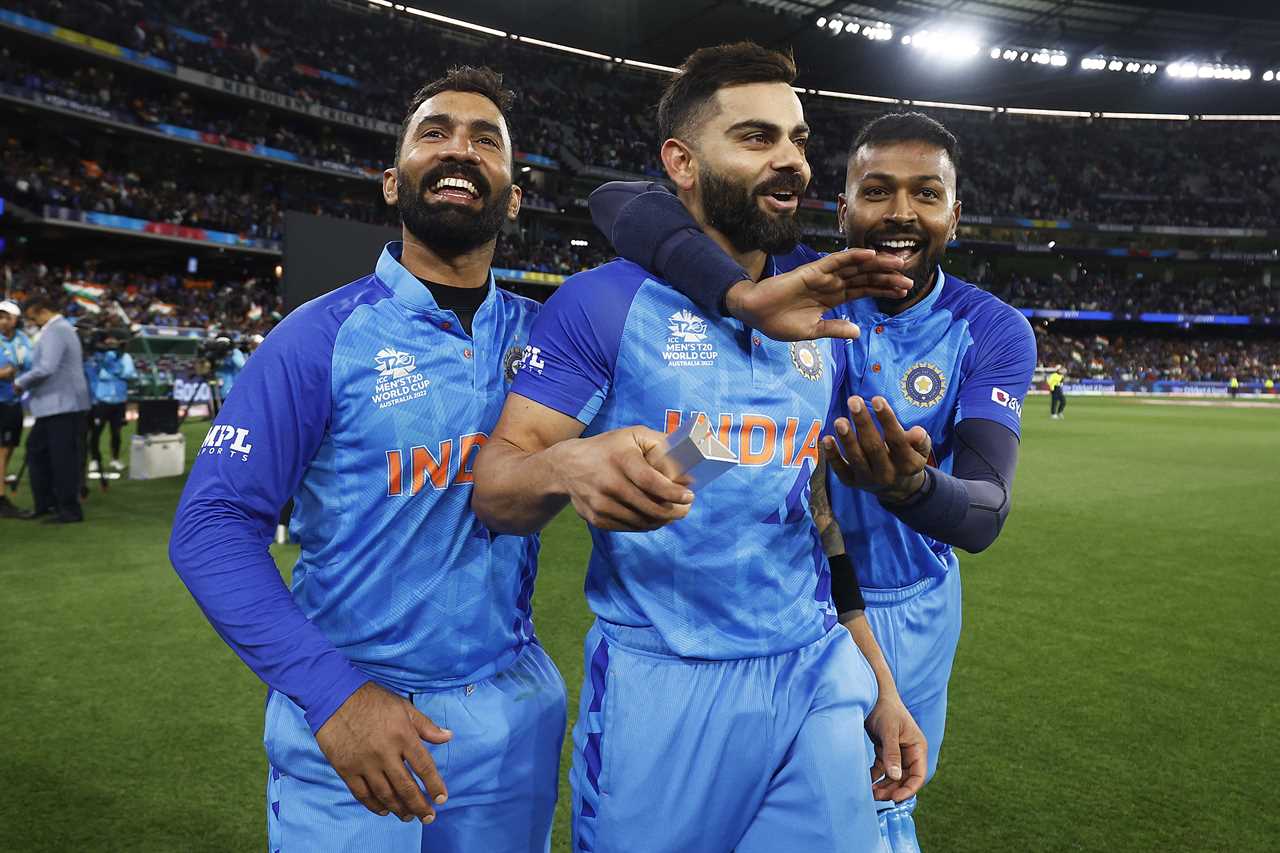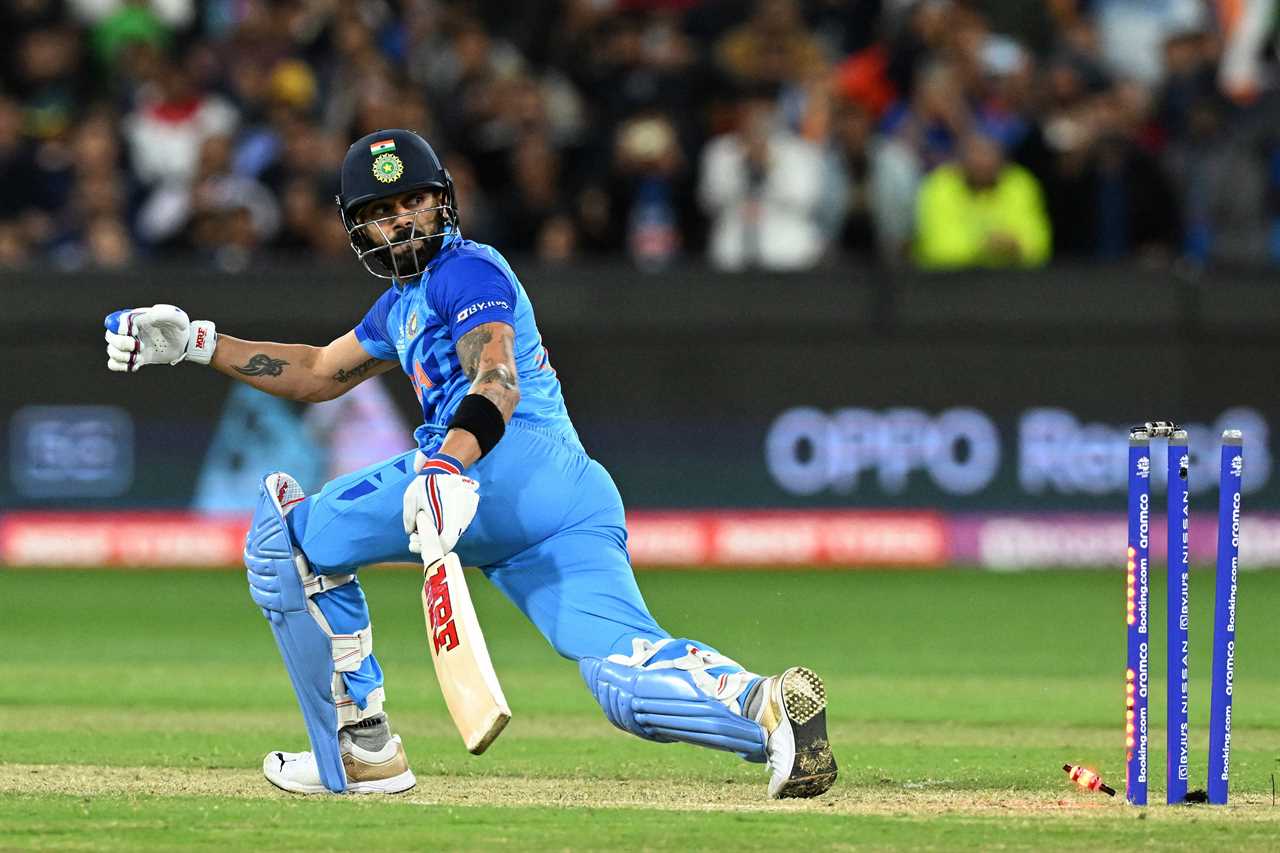EVERYBODY loves things in life that come for free – and the same applies with a free hit in cricket.
Indian supporters jumped for joy after their monumental T20 World Cup win against Pakistan.

India secured a huge win over Pakistan in the T20 World Cup
But the victory had Pakistani fans diving for the rule book as Virat Kohli’s runs were still taken despite his stumps being rattled courtesy of a free hit.
Find out more on a free hit below…
What is a free hit in T20 cricket?
A free hit in cricket gives the batsman a free hand in dealing with the delivery as he wishes without fear of any dismissals.
The rule was first introduced in the 2007 T20I World Cup in South Africa and it is applied only in the limited-overs cricket such as the ODI and T20.
Free hits are awarded to the batting team as a way of penalising the bowling team for all kinds of no-ball transgressions and it is always the next delivery after the no-ball.
This means that the batsman can continue to make their runs even after being bowled out or if the fielder makes a clean catch off a free hit delivery.

India’s Virat Kohli was bowled on free hit against Pakistan
Clause 41.7.1 of the Laws of Cricket and the ICC T20 World Cup playing conditions state: “Any delivery, which passes or would have passed without pitching above the height of any striker standing upright at the popping crease is to be deemed to be unfair.”
However, a batsman can still be dismissed on free hit by either a run-out, hitting the ball twice or obstructing the field.
How can a team be awarded a free hit?
Batting teams are awarded a free hit for a no-ball call which is when a spinner delivers what is deemed an illegal toss.
Not all types of illegal deliveries fell under the free hit umbrella but as of 2021, the umpire can signal a no-ball for a; front foot, back foot, height or having three or more fielder behind square on the leg side.
The law also stipulates that the captain is forbidden from changing their field on a free hit.
But if the batsmen crossed and there is now a left hander on strike instead of right hander or vice versa, then an alteration is allowed.
What if the next delivery is signalled as a no-ball?
If the free hit delivery is signalled as another no-ball, the process is then repeated.
What happened in Pakistan vs India?
On the fourth and final ball of the match, Virat Kohli smashed a full-toss from Pakistan’s Mohammad Nawaz over the square leg boundary and immediately put his arm out to signal no ball.
South African umpire Marais Erasmus initially turned to watch Kohli’s shot sail towards the boundary having missed the no-ball call.
But after the six was confirmed, Erasmus indicated that the delivery was above the waist which then led to standing umpire Rod Tucker signalling for a no-ball.
And as a result, India marginally beat Pakistan by four wickets in the T20 World Cup.
 Cricket NewsTips and TricksPrivacy PolicyTerms And Conditions
Cricket NewsTips and TricksPrivacy PolicyTerms And Conditions
